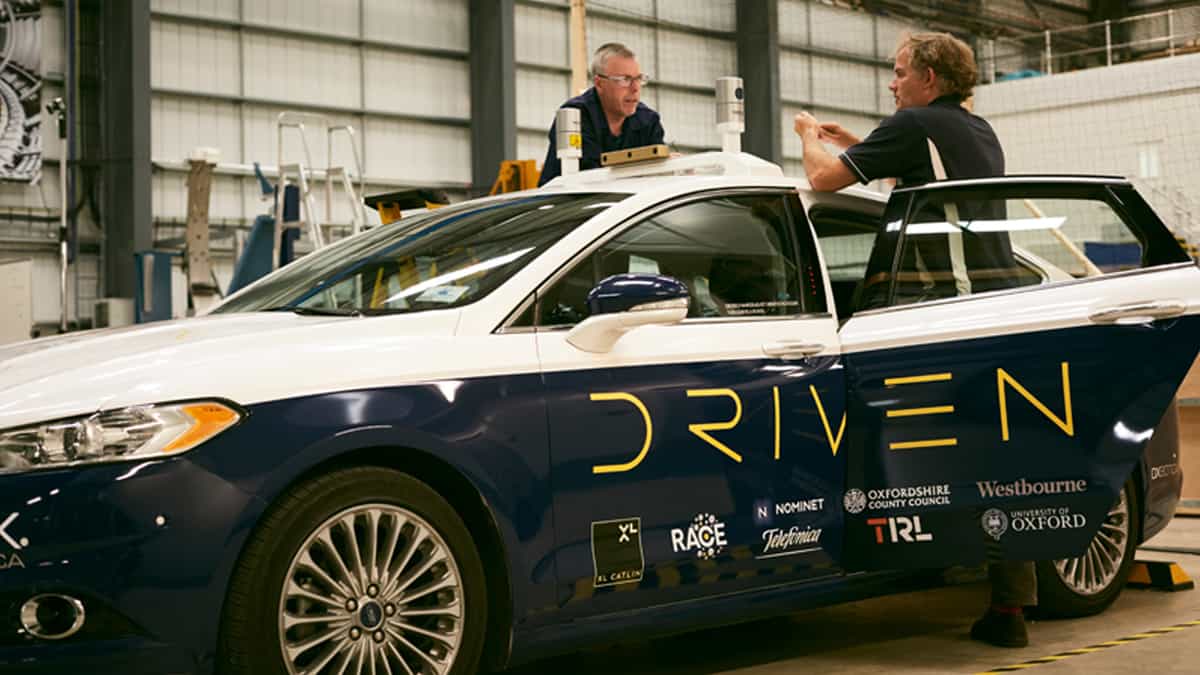
London had its first taste of self-driving cars when autonomously driven Ford Mondeos made their way on the roads surrounding Stratford’s Queen Elizabeth Olympic Park earlier this week, albeit with safety drivers in the driver seats. The pilot test was conducted by U.K. startup Oxbotica and the Driven program, a consortium partially funded by the U.K. government.
The Driven consortium is a £13.6 million program that was initiated to propel the U.K. to become one of the leading stakeholders in the self-driving segment. The 30-month program has stakeholders that include Transport for London (TfL), Oxford Robotics Institute, Axa XL, Nominet, Telefonica, TRL, RACE, Oxfordshire County Council and Oxbotica. The autonomous vehicle test in Stratford was successful in showing that Oxbotica’s systems were safe to navigate in an urban setting.
The U.S. and China have been the hotspots of autonomous driving technology, with automakers and cash-rich mobility startups working at perfecting self-driving vehicles across urban environments. Companies like Waymo and Cruise Automation have been the pick of the lot, having completed thousands of miles of autonomous vehicle miles without human intervention and devoid of accidents.
That said, autonomous driving technology is merely an umbrella term that includes several levels of automation and varying technological approaches to self-driving. For instance, Tesla fundamentally rejects the idea of using LiDAR – a sensor that uses light pulses to define the driving environment – saying it will use artificial intelligence-powered cameras, GPS and maps to better effect. Companies like Waymo, Cruise Automation and Uber swear by LiDAR, and consider it to be an integral part of their automation efforts.
However, irrespective of the route to automation, a rudimentary need to build autonomous technology is data, which can be gathered both by simulating miles or by getting a car to drive on the road. Oxbotica, with its autonomous Ford Modeos, will now have real-life data to work with in order to perfect its technology. In the trial run, the Mondeos weaved through residential streets and traffic intersections in the Stratford East Village area, without the need for the safety drivers to take control.
“The car is a bauble on top of the iceberg: underpinning that is a host of other things that need to happen, from cybersecurity to ensure we have constant, secure communication; insurers for product liability; and real-life risk assessment,” said Graeme Smith, program director at Driven.
Smith’s careful optimism is justified, as the autonomous driving segment cannot hope to skip through regulatory hurdles without convincingly answering questions concerning security, ethics and liability. For instance, bolstering the system firewalls around autonomous driving software is critical, as the vehicle will be subject to frequent hacking attempts. The ethical dilemma surrounding accidents involving autonomous vehicles need adequate scrutiny, based on which regulations must be cemented in place.
In the context of the economy at-large, autonomous driving technology can eventually end up replacing thousands of driver jobs. Paul Newman, founder and chief technology officer of Oxbotica, believes that though the technology will be replacing drivers, it will create avenues where new jobs will be created. “There is no doubt we’re not going to be sitting behind wheels in the future,” he said. “It is going to be a revolution but not a tragedy; more people will survive [on roads]; these vehicles will share their experiences and be even safer.”

